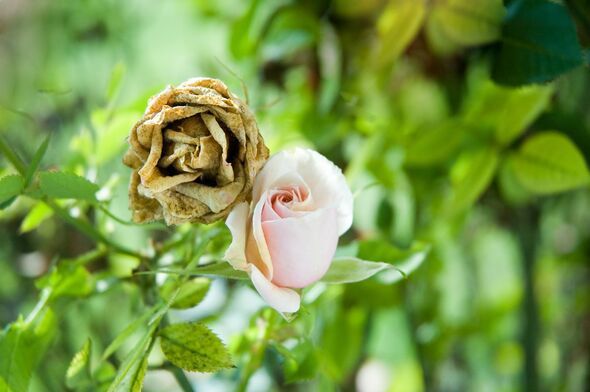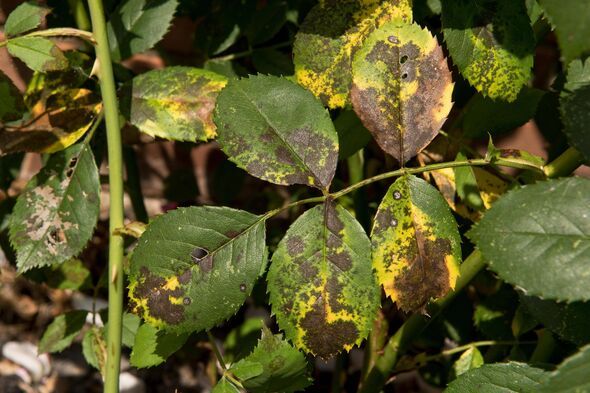

It's the zenith of rose season, with our cherished blooms expected to dazzle gardens with vibrant hues and scents. But what if your treasured roses are marred by yellowing leaves, diminished flowers, or an overall lacklustre appearance?
Philip Harkness, co-owner of Harkness Roses, launched five new roses at the 2023 RHS Chelsea Flower Show. Speaking soon after, he advocated for proactive measures.
He said: "Prevention is easier, so make sure you have sunlight and the roses aren't in places which are too dark and overcrowded. If they are near a big hedge, they are going to be struggling for water and for light. If the plant is under stress it is more prone to become unhealthy.
"Think of plants as people. They do suffer stress in hot, dry conditions and if there's competition. If you get the underlying culture and environment right for them, they should fare far better than if they are undernourished, underwatered or overwatered."
He suggests a robust feeding schedule - a liquid feed every fortnight - coupled with good air circulation around the plant and consistent watering in the morning, particularly for potted roses, to bolster their vigour.
However, gardeners might still encounter typical rose afflictions.
 Why your roses are dying and what to do about it
Why your roses are dying and what to do about it
Black spot
"This airborne fungus is the most common disease. You'll get a black marking on the leaf, after which the leaf will go yellow on the outside and then it will fall off," Harkness said.
"It usually appears just after the first flowering, because the plant's put all its energy into flowering and not enough energy into defending itself. If you gave roses a granular feed, which takes time to get into the soil, in the middle of May and June, and they finish flowering in July, the granular feed will just be getting down to the roots at the time the flowering is finishing, and just give them another boost. Use a rose fertiliser early June which will help the plant in mid-July."
The specialist provided insight into mitigating black spot damage by encouraging fresh growth: "When you've deadheaded your first flowers, if you've got black spot, instead of deadheading a little bit, give your rose a summer prune - cutting half of the stem off - which will make it develop new shoots which are a bit lower down which will have a good resistance to black spot because the young new growth is a bit better at defending itself than the older leaves."
For those seeking robust rose varieties and environmentally-safe treatments, he recommends seeking out roses more resistant to black spot and using sulphur as an effective fungal deterrent, noting that sulphur powder is readily available at garden centres.
Rust
"This is another airborne fungus which tends to come later in the season, in late summer and early autumn. On the underside of the leaves you get a little orange pustule and as it matures it turns black. The only thing you can do is take the leaves off. It's usually the lower leaves which are attacked. It's best to learn to live with it than blast it with chemicals."
Mildew
This fungus causes the leaves to go white and dusty, Harkness explains. "It is prevalent usually from August onwards, although the weather keeps changing."
There are two causes - when the rose is in a damp, moist atmosphere; or where the plant is too dry at its roots if it's hot.
"It usually appears on a stem that's waiting to flower and you might as well let the flower bloom and then cut back down the stem."
Greenfly
"With greenfly, I'm keen on prevention. You can spray with a garlic product because they don't like garlic. If you do get greenfly, spray them with a weak solution of washing up detergent, which will break down the surface tension of the water and forms a film which makes the water cling to the greenfly and drowns them."
Flower damage
Flowers which form in hot, drought conditions may shrivel, while insects such as caterpillars may eat a hole in the bud of flowers, deforming them, he warned.
"Western flower thrip nibbles the top of the petals, which will emerge with a brown edge to them. They are two millimetres wide and two millimetres long - they are tiny and you can only see them if you turn the flower upside down and tap it into your palm and see a dozen tiny wriggling insects in your hand."
Can diseases survive winter?"Yes. Give the plants a winter wash - again available in garden centres - while the plants are dormant, so you are starting with a clean slate the following year."
Under pruningPeople are often reluctant to prune their roses hard, but if you prune them hard enough you get bushier, sturdier plants (with the exception of climbers), Harkness said. "If you are having problems with your plants, when you prune them in the spring, cut off 30% or 40% more than you think you should."
-
Huge petition to stop asylum seeker benefits signed by 380k 'ignored' by Keir Starmer

-
Hindi Not Mandatory In Maharashtra Schools, Says Govt; To Be Treated As 'General' Third Language

-
Navi Mumbai News: NMMC Declares 501 Buildings Dangerous For 2025–26, Orders Immediate Evacuation Of 51 Structures

-
Central Railway Completes Doubling Of Challenging Shindawane–Ambale Ghat Section, Pune–Satara Stretch Now Fully Operational

-
Bitten By Venomous Snake, MP Man Chops Off Own Finger, Reaches Hospital With Plastic-Wrapped Wound
